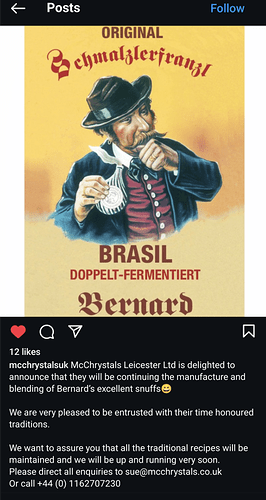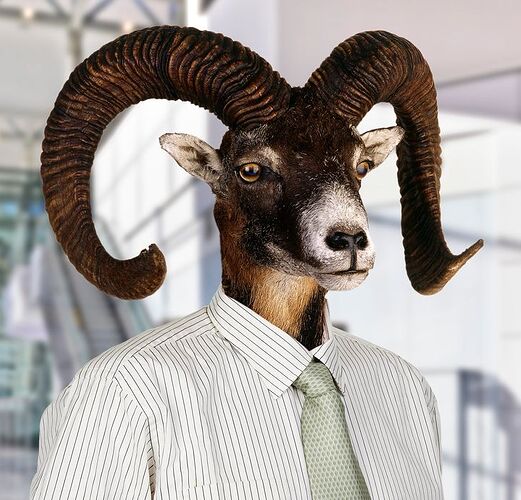Yes, Bernard’s long, long history of snuff production is over. Even if the names and artwork continues the contents will be different.
When Pöschl Tabak took over the Perlesreuter company they maintained they would keep the same recipe for their (Perlesreuter ‘s) flagship Schmalzer but I never sampled the original so a comparison was not possible. However, Perlesreuter’s Schmalzer (made by Pöschl) was black, rather than the brown colour of Pöschl’s usual fare, and very rich in flavour. (Or at least it was). I don’t know if it is still made but the point is that Pöschl, unlike McChrystal’s, were/are capable of making a genuine German Schmalzer. Unfortunately, as per an earlier post, Pöschl Tabak have declined continuation of any of the Bernard line.
The grades of Schmalzler, as most here are doubtless aware, depend on the amount of mangotes they contain. The higher the proportion of mangotes, the better and more expensive the Schmalzler which is why the Bernard snuffs sold in those glass jars in Germany varied so much in cost. As Filek as pointed out in his excellent book (ask him for an English copy for more detail) there are four methods of making snuff and that these are:
Carrot Method (obsolete to the best of my knowledge)
The Paris Method (Samuel Gawith was the last manufacturer to use this method in the UK for their genuine rappee)
Rapid Method (how most snuff is manufactured-see the article on J&H Wilsons)
Schmalzler Method (Bavarian specialty)
Just how a company whose activities are confined to blending and/or adding flavours to Sharrow’s flour and packaging in tins with the McChrystal’s label are expected to recreate the genuine Bavarian Schmalzler Method of snuff production eludes me.
BTW - I don’t know whether it was still available when the business folded but Bernard’s Amostrinha has an interesting history. Amostrinha was the name of a very old snuff manufactured by the Portuguese and exported to China in huge quantities via their colony in Macau. It was very popular with the Chinese who were great snuff-takers and provided a valuable source of income to Portugal. (Britain, by comparison, exported opium to China and reaped an even greater income). However, I doubt whether Bernard’s version is in any way similar to the original Portuguese snuff.




